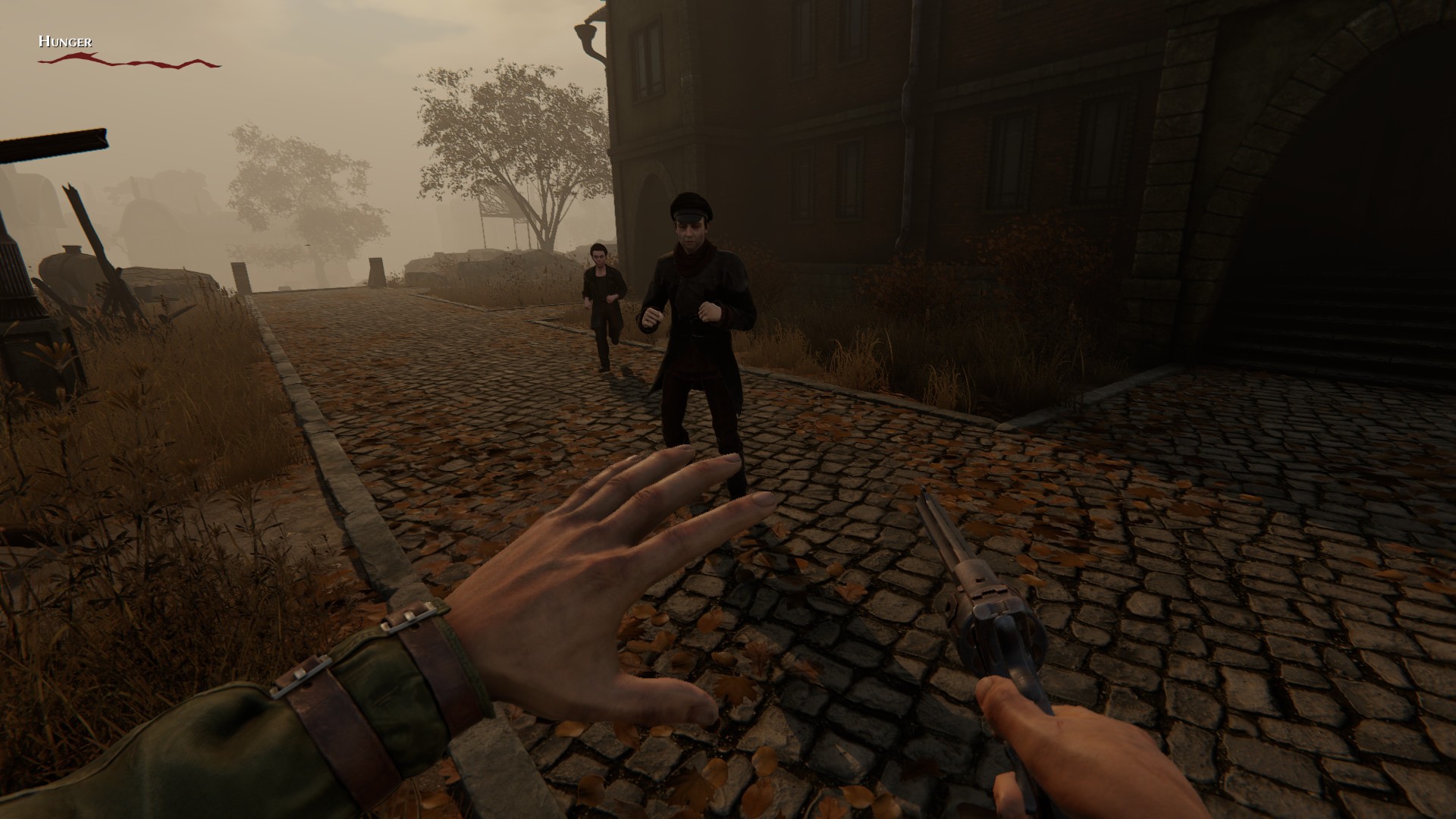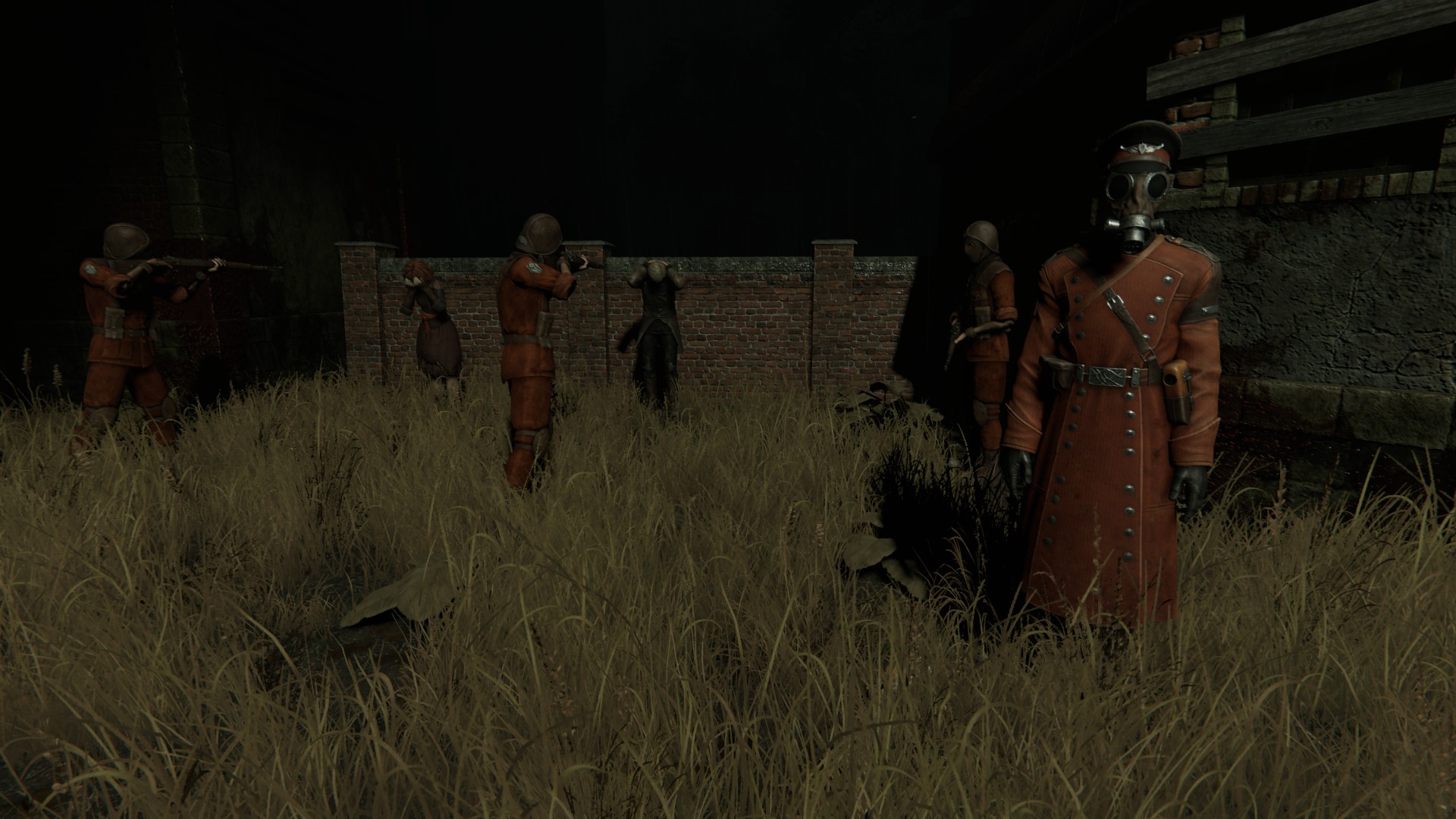
Pathologic 2 is a game that makes it clear what type of experience you can anticipate right from the very start. Loading into a new game, the first thing you’re going to be faced with is a difficulty select screen with three possible options: Larva, the easiest setting but which warns it is not to be considered a ‘story mode’; Cocoon, which takes the middle ground; and Imago, the recommended setting that warns you will struggle and likely die in the course of the game and, in so doing, gain a ‘new understanding of the world of Pathologic 2’. Overlaying it all is the game’s deeply unsettling musical score of chanting and discordant chimes.
As openings go, this one page lets you know everything that you need to understand about the game before you start: that nothing that’s about to happen is going to be easy.
The true game of Pathologic 2 opens on what it informs you is Day 12. You’re in a theatre that has been converted into a makeshift infirmary, with the bodies of the dying and the dead scattered around on gurneys and only the lucky few still on their feet. There’s a couple of people you can speak to, none of whom make much sense and one of whom is a humanoid crow figure accompanied by several shadows that shouldn’t be there. Through these brief, confusing conversations, you’ll learn that you need to head to the cathedral as soon as possible because a decision is about to be made and you need to tell an unspecified ‘them’ that you’ve discovered how to make a cure.
What follows is a horrifying and atmospheric journey through a town deep in the grip of what can only be described as a nightmare. Armed guards are everywhere; on one side of the street you see men being lined up before a firing squad for looting, while on the other a soldier with a flame thrower burns buildings and people alike while the air fills with the sound of their screaming. Bodies covered in white sheets line the roads.
When you do eventually reach the cathedral, you’ll find that it holds no answers either. The people inside inform you that they’ve made the decision to destroy the town and nothing you can say will dissuade them, before time freezes and you’re offered the chance to return to Day 1 and try again. With that, the story starts for real with your character, a doctor called Artemy Burakh, on a train to the town having received a letter from his father summoning him back home.
The rest of your time spent in the game will be living out the following 12 days, which steadily progress in real time – 24 hours in-game will take 2 real hours to complete, excluding any time spent on menus or dialogue screens. If you fail to complete your objectives in a certain time frame, those opportunities may be gone for good. Even running from point to point, you’ll rapidly discover that you can’t save everyone and, sooner or later, you’re going to have to make some impossible choices to try to save the town.

What really uplifts Pathologic 2 beyond its story is how it manages to convey its mood in a way that is tremendously oppressive, while not detracting from the story that’s unfolding. A lot of this atmosphere is carried by the music, which varies ranges from eerie to the downright creepy, but it’s firmly backed up by the game’s visuals. The town itself is dull and grey, and you never seem to see the sun, while the character designs always seem to look just a little out of place in a way that never feels comfortable.
Conversations are even more intense. Each dialogue interaction consists of written text beside a disturbingly close up shot of the NPC’s face, often accompanied by a single voice line that is almost always delivered in a low monotone to give you a bit of background for each character. In comparison to some of the more lacklustre graphics in the open world, these models are highly detailed and, while they’re far from photorealistic, their proximity really heightens your disquiet during any interaction.
The dialogue itself is your primary method of interacting with Pathologic 2’s world and so, like everything else, it strives to be esoteric and inscrutable at every turn. From the very beginning of the game you’ll be offered dialogue choices that feel as though they’re going to have significant ramifications later on, but without any context of which choice would be the best one. For instance, a lot of characters in the early game will ask you about why you chose to leave the town, what your relationship with your father was like, and why you decided to come back after so long away – the responses you give to these questions can entirely change your relationship with vital NPCs, but you almost never have forewarning about what type of answer will bring about the best outcome.
Combined with the non-linear and somewhat oblique method of storytelling, these conversations mean it can take a very long time before anything in Pathologic 2 makes any kind of sense, and the confusion you share with your protagonist in the early game is a really compelling drive to keep going.

Unfortunately, everything that Pathologic 2 gets right is almost immediately hamstrung by incredibly poor optimisation. Even something as simple as booting up the game rapidly becomes an exercise in patience as you’re required to sit and wait on a loading screen for several minutes each time you want to play. Far worse still are the moments littering actual gameplay when you’re forced to pause for upwards of ten seconds while it loads the next area, complete with a plummeting frame rate even once the load has ostensibly finished. You’ll encounter such loading gates any time you want to go through a door or, very frustratingly, every time you move to a new ‘district’ of the town. As almost all missions will require at least a little bit of travel and many will ask you to cross the map entirely, you’ll likely end up encountering these barriers every few minutes with increasing annoyance at how much they slow you down.
These delays are compounded by Pathologic 2’s intensely punishing difficulty. With resources perpetually being cripplingly low, you’ll need to move around the world as quickly as you can to reach your next objective or there’s a good chance you’ll perish before you get the chance. Thankfully the loading gates freeze the game beyond player movement and so your condition won’t deteriorate while you’re unable to do anything, but that doesn’t necessarily mean you’re safe.
If you sprint around the map, the game will struggle to keep up and you’ll start to encounter textures, objects, and even entire buildings popping-in without warning. The issue here is that you’ll be unable to interact with the world around you until it has fully rendered, meaning that you may find yourself on the brink of death, desperately dashing towards the nearest building for safety, only to find that you can’t open the door because you need to wait for the texture to pop in. With gameplay already being so punishing, moments like this can feel tremendously unfair and frustrating.
Pathologic 2’s difficulty also diminishes some of what makes the game so appealing. The slowly unravelling nature of the story and the sense of unease that dogs your every step are very compelling, but they’re perpetually overshadowed by your steadily diminishing status bars. If your hunger, immunity, exhaustion, or stamina/thirst bars hit zero, they’ll start to drain your health and, once that’s gone, you’ll die. Hunger, in particular, is a tremendous burden – even when the story reaches a climax and suddenly reveals new and interesting concepts for you to work through, finding more food can never not be your top priority.
Fortunately, if you are struggling to the point of being unable to play the game, Pathologic 2 does offer a wide variety of difficulty sliders that change various mechanics, such as how much food refills your hunger meter or how quickly your immunity recovers. Fiddling with these can reduce Pathologic’s intense challenge considerably, but if you wait too long to change them, you may still find yourself stuck in a spot where you can’t obtain the resources you need to save yourself before you succumb to whatever ails you. One design aspect of this system that seems particularly strange is that it isn’t until you attempt to change the game’s difficulty that it warns the recommended difficulty, Imago, isn’t actually recommended for first time players – why it doesn’t say something similar on the initial difficulty select screen is unclear.
Overall, there is a lot in Pathologic 2 to enjoy, particularly if you’re interested in a more indirect form of storytelling, but you will have to work to get to it. It’s possible newer patches for the game will be released that can smooth over some of the most critical loading issues – the game already has one free DLC to add more content, so it’s clear the developers aren’t done quite yet. Hopefully, by the time they’re finished, Pathologic 2 will be able to fully deliver on the experience it initially seems to promise.
REVIEW CODE: A complimentary Microsoft Xbox One code was provided to Bonus Stage for this review. Please send all review code enquiries to press@4gn.co.uk.
Subscribe to our mailing list
Get the latest game reviews, news, features, and more straight to your inbox
Thank you for subscribing to Bonus Stage.
Something went wrong.
Pathologic 2 Review
-
Gameplay - 6/10
6/10
-
Graphics - 6/10
6/10
-
Sound - 6/10
6/10
-
Replay Value - 6/10
6/10
Overall
Summary
A brilliantly atmospheric tale of a small, remote town caught in the grip of a deadly plague that would be enthralling if it was less hindered by bugs and poor optimisation.
Pros
- Very good at generating an oppressive mood
- An interesting story that continually draws you in
Cons
- Incredibly poor technical performance throughout
- Difficult to the point of being unwelcoming to new players





